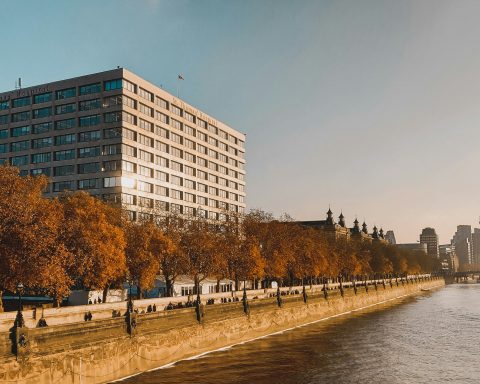
COVID-19 triggered substantial changes in the ways that GPs consult with their patients. NHS Digital data show that, prior to the pandemic, about 80% of appointments took place face to face, while around 14% were held over the telephone (the rest were home visits or video appointments).1
The first national lockdown dramatically reduced the proportion of consultations that took place face to face, and increased those over the telephone, such that each constituted about 48% of total appointments. Since then, both modalities have trended towards their pre-pandemic baselines at comparable rates, but neither have yet reached their pre-pandemic baselines (in September 2023, 70.7% took place face to face, and 23.8% were over the telephone).1
It is intuitive that remote consultations — particularly telephone appointments — harbour safety issues that face-to-face consultations do not simply because the GP is unable to directly see and physically examine the patient. While the severity and prevalence of these safety concerns were dramatically exaggerated by UK newspapers during COVID-19,2 it is undeniable that these risks genuinely exist to a non-zero degree. Given the increased reliance on remote consultations since the pandemic, the safety of the patients that use them is an important area for rigorous study.
“… the safety of patients often depended on individual staff members taking initiative … “
A new study in BMJ Quality and Safety by Rebecca Payne and colleagues set out to learn why safety incidents occur in remote encounters and how they can be prevented.3 The study utilised a multimethod qualitative approach across the UK, which encompassed both incident analysis and longitudinal ethnography, and was supplemented by national stakeholder interviews.
The ‘Safety I’ analysis focused on understanding what went wrong in the identified incidents. This part of the study explored 95 safety incidents involving remote primary care encounters that were sourced from complaints, settled claims, and investigation reports. Subsequently, the ‘Safety II’ analysis examined the kinds of creative actions taken by frontline staff that contribute to a safety culture that prevents these kinds of incidents. This part of the study took a prospective longitudinal approach that used interviews and ethnographic observation to produce individual-, organisational-, and system-level explanations for why safety and near-miss incidents occurred and why they did not do so more often.
The study emphasised that, while safety incidents in remote primary care encounters are extremely rare, they can lead to serious patient harm and even death. The 95 incident reports, which were almost all related to telephone consultations, were characterised by the following features: inappropriate modality (such as telephone rather than face to face), poor rapport building, inadequate information gathering, limited clinical assessment, inappropriate care pathway (for example, use of wrong clinical algorithm), and inadequate attention to social circumstances. The safety incidents led to missed, inaccurate, or delayed diagnoses, underestimation of clinical severity or urgency, delayed referral, incorrect or delayed treatment, poor safety netting, and inadequate follow up.
The kinds of patients particularly at risk of harm were those with complex pre-existing conditions, cardiac or abdominal emergencies, vague or generalised symptoms, safeguarding issues, failure to respond to previous treatment, or communication difficulties. The GP surgeries in which these incidents occurred faced resource constraints, understaffing, and high patient demand. Triage and care pathways were found to be complex, hard to navigate, and involved multiple members of staff. The authors also found that the safety of patients often depended on individual staff members taking initiative, speaking up, or providing personalised solutions to mitigate potential safety issues.
“… remote consultations harbour an inherent degree of risk that is greater than that of face-to-face encounters.”
Based on these findings, the authors proposed mitigation strategies at staff, process, and system levels. Among these suggestions, they identified the following clinical conditions as often requiring a face-to-face assessment: acute chest or abdominal pain, breathing difficulties, breast lump, palliative care, physical injury, new psychosis, diabetes reviews where eye or foot examination is needed, persistent or progressive skin lesion, and acute history that does not make sense.
They also highlighted the following clinical trajectories as often necessitating an in-person appointment: condition has not resolved as expected (or has progressed) after previous remote consultation(s), escalating parental concern, and acute condition overlaid on pre-existing complex illness (including mental health).
The authors also identified the following patient-level features that make remote assessment more difficult and for which a lower threshold for defaulting to the face-to-face modality should be adopted: extremes of age, care home residents if on-site staff not confident to undertake observations, language non-concordance, relevant impairment (for example, deafness), conditions that may complicate communication (for example, autism), low health literacy or system literacy, and lacks key technologies or the ability to use them. Finally, they identified key features of effective safety netting, suggested organisational- and system-level measures (including adequate staffing and appropriate mix), and offered advice to be directed at patients and carers to promote safety in remote encounters.
I find the telephone to be a challenging consultation modality, and I’m much more comfortable with the risk profile that is inherent to face-to-face appointments. At least for me, therefore, the findings of this study are entirely unsurprising, yet this appears to be the first time that they have been so clearly and completely ascertained and presented. Given this, the thoroughness of this work, and the authors’ suggestions for mitigation that emerge from it, provide me with a sense of comfort. This is because my own intuition of the factors that make telephone consultations feel ‘risky’ are revealed by this study to be correlated with genuine risks of patient safety incidents. As a result, the availability of this recent, UK-based, high-quality research gives me more confidence when deciding to adopt a lower threshold to default to the face-to-face modality, and when insisting that an in-person encounter is clinically necessary. Unless I’m alone in finding telephone consultations tricky with regard to risk and patient safety, other GPs might find this study to be similarly useful.
Telephone appointments are here to stay (in fact, 7 872 208 of them took place in England alone in October 2023).1 To provide a convenient service that meets growing patient demand1 with a shrinking GP workforce,4 the telephone is a highly valuable asset. But remote consultations harbour an inherent degree of risk that is greater than that of face-to-face encounters. With this backdrop, the new BMJ Quality and Safety study is timely, relevant, and offers immediate utility for frontline GPs and practice leaders.
References
1. NHS Digital. Appointments in general practice. 2023. https://digital.nhs.uk/data-and-information/publications/statistical/appointments-in-general-practice (accessed 12 Dec 2023).
2. Mroz G, Papoutsi C, Greenhalgh T. UK newspapers ‘on the warpath’: media analysis of general practice remote consulting in 2021. Br J Gen Pract 2022; DOI: https://doi.org/10.3399/BJGP.2022.0258.
3. Payne R, Clarke A, Swann N, et al. Patient safety in remote primary care encounters: multimethod qualitative study combining Safety I and Safety II analysis. BMJ Qual Saf 2023; DOI: https://doi.org/10.1136/bmjqs-2023-016674.
4. British Medical Association. Pressures in general practice data analysis. 2023. https://www.bma.org.uk/advice-and-support/nhs-delivery-and-workforce/pressures/pressures-in-general-practice-data-analysis (accessed 12 Dec 2023).
Featured photo by Miryam León on Unsplash.









Totally agree Richard. The key is to give the patient the choice , but it’s increasingly clear that default F2F appts are actually safer and more efficient . Is an increase risks of bad incidents really worth it for the sake of ‘convenience’?